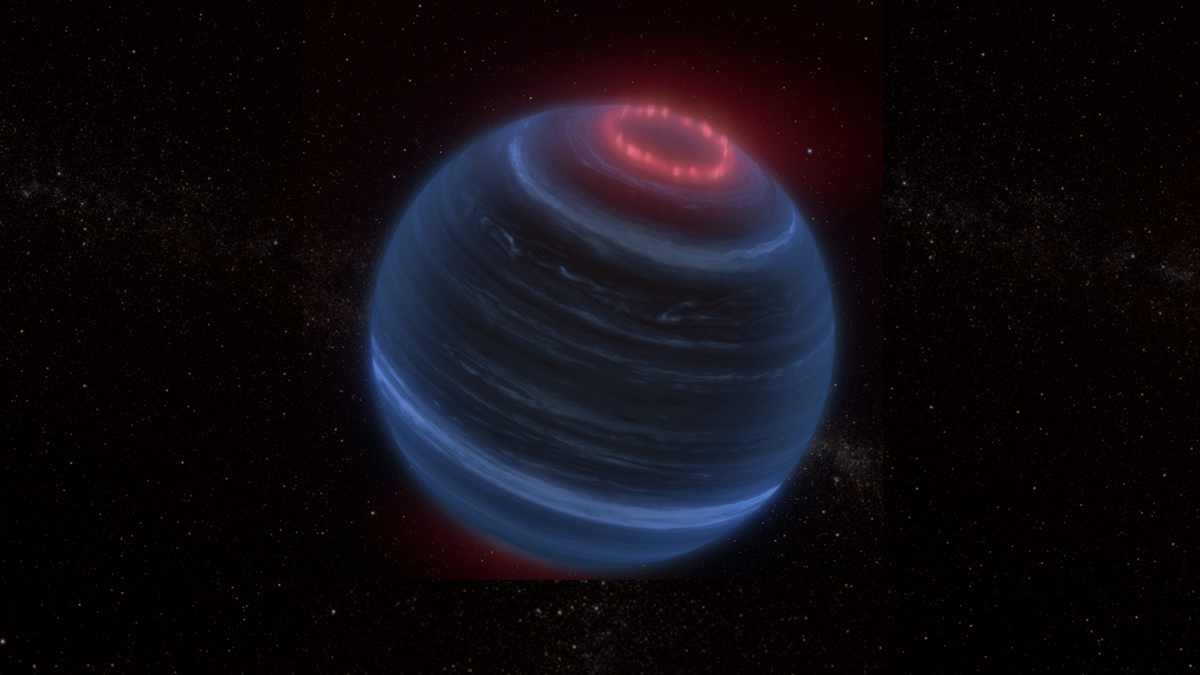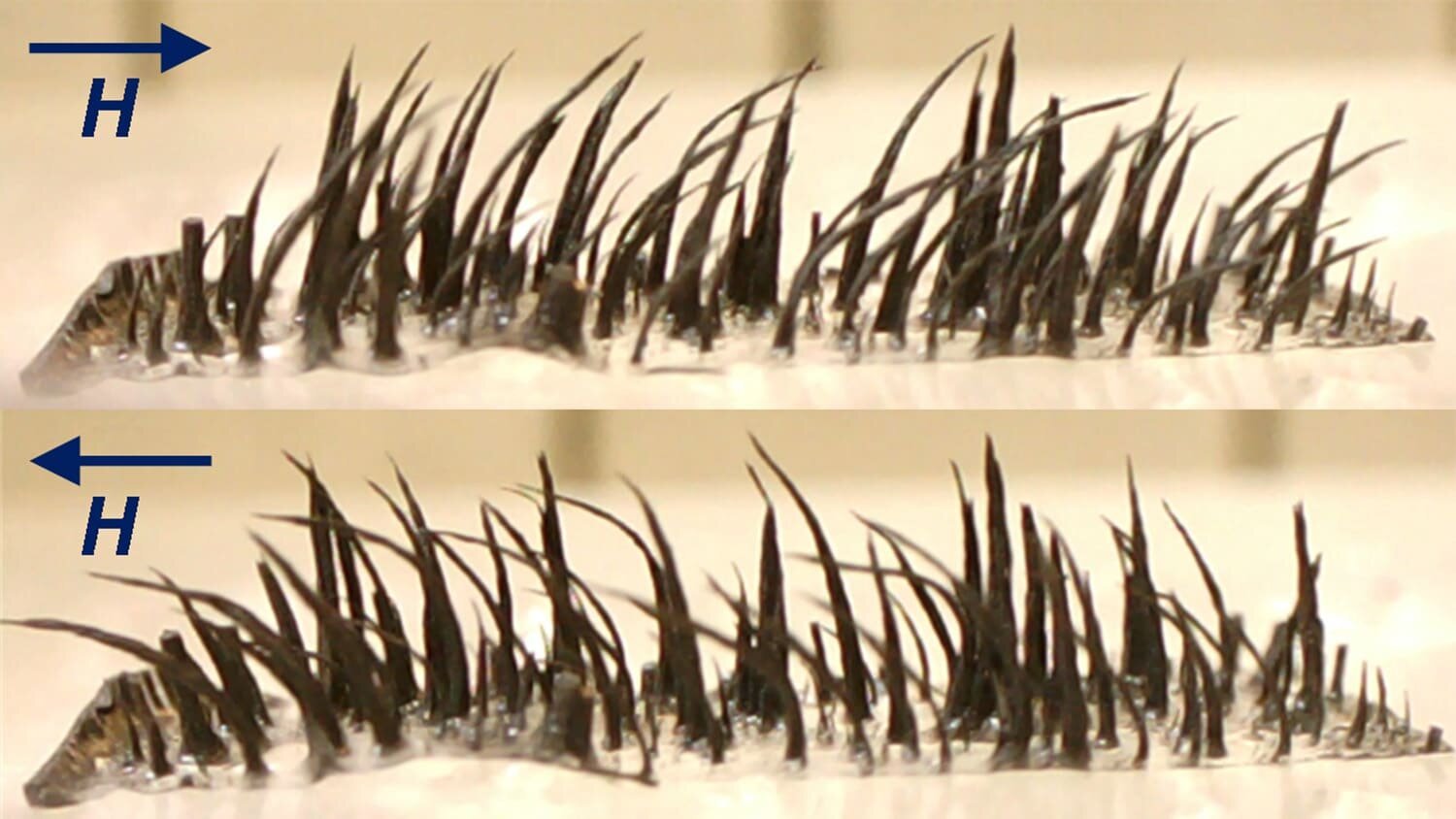Using NASA’s James Webb Space Telescope (JWST), astronomers have spotted a “failed star” or brown dwarf that shows signs of possessing an aurora.
Auroras are more familiar as the northern and southern lights, which are caused by charged particles from the sun striking molecules in Earth’s atmosphere. They’re usually seen only at high latitudes, because our planet’s magnetosphere funnels these particles toward the poles.
Auroras have been spotted around other planets in our solar system, such as Jupiter and Saturn, and even over active moons like Jupiter’s Io and Saturn’s Enceladus. All of these light shows are likely caused by bombardment by charged solar particles.
So the newfound apparent aurora around the brown dwarf, designated W1935 and located over 40 light-years from Earth, is mysterious; there are no stars close to it that could be providing the charged particles to fire it up.

Related: ‘Failed star’ is the coldest radio wave source ever discovered
Brown dwarfs are larger than gas giant planets and smaller than stars but form like stars do, from a collapsing cloud of gas and dust. That means that most brown dwarfs are often isolated from stars, just like W1935.
They get their slightly unfair nickname, “failed stars,” because they don’t have enough mass to trigger the nuclear fusion of hydrogen to helium at their hearts, the process that powers stars, at least in their main-sequence lifetime.
The potential aurora over W1935 was indicated by infrared emissions from methane, spotted by JWST. When methane emissions like this are seen over Jupiter and Saturn, they are the result of atmospheres being heated as charged particles whip down magnetic field lines and hit atmospheric particles, also creating aurorae. So the study team thinks that the same applies to this isolated brown dwarf.
With a lack of an external solar wind to cause the brown dwarf’s likely aurora, the team believes that there may be some internal process occurring within the brown dwarf supplying energy to its atmosphere. Alternatively, interstellar plasma could be striking W1935, or the brown dwarf may not be totally isolated and could be receiving an influx of particles from a nearby active moon.
James Webb Space Telescope plays spot the difference with 2 brown dwarfs
The team of scientists, led by American Museum of Natural History astronomer Jackie Faherty, made the discovery while investigating 12 brown dwarfs with JWST.
Among these were W1935 and W2220, two very similar brown dwarfs that the $10 billion telescope found were near clones of each other, sharing similar temperatures and brightness as well as near-identical compositions of water, ammonia, carbon monoxide and carbon dioxide.
However, W1935 differed from its near twin in having methane that was emitting infrared light. On W2220, the same chemical compound was absorbing light.
“We expected to see methane, because methane is all over these brown dwarfs. But instead of absorbing light, we saw just the opposite: The methane was glowing,” Faherty said in a statement. “My first thought was, what the heck? Why is methane emission coming out of this object?”
Modeling the atmospheres of the brown dwarfs to determine the cause of the methane emission, the team found the atmosphere of W2220 cools with altitude, but the atmosphere of W1935 seems to be experiencing a temperature inversion that sees its atmosphere heating up at higher altitudes.
“This temperature inversion is really puzzling,” research lead modeler Ben Burningham of the University of Hertfordshire in England, said in the same statement. “We have seen this kind of phenomenon in planets with a nearby star that can heat the stratosphere, but seeing it in an object with no obvious external heat source is wild.”
That led the team to turn to Jupiter and Saturn for an explanation, finding temperature inversion is prominent in the atmospheres of these solar system gas giants, too. The leading theory for this is heating by the same process that is creating an aurora.
Aurorae have been used to explain unusual qualities of brown dwarfs before, such as radio emissions from warmer examples of these failed stars. However, the JWST observations of W1935 represent the first time that a methane emission from a brown dwarf has been spotted, indicating an aurora.
“With W1935, we now have a spectacular extension of a solar system phenomenon without any stellar irradiation to help in the explanation,” Faherty concluded. “With the JWST, we can really ‘open the hood’ on the chemistry and unpack how similar or different the auroral process may be beyond our solar system.”
Faherty presented the team’s work this week at the 243rd meeting of the American Astronomical Society in New Orleans.










